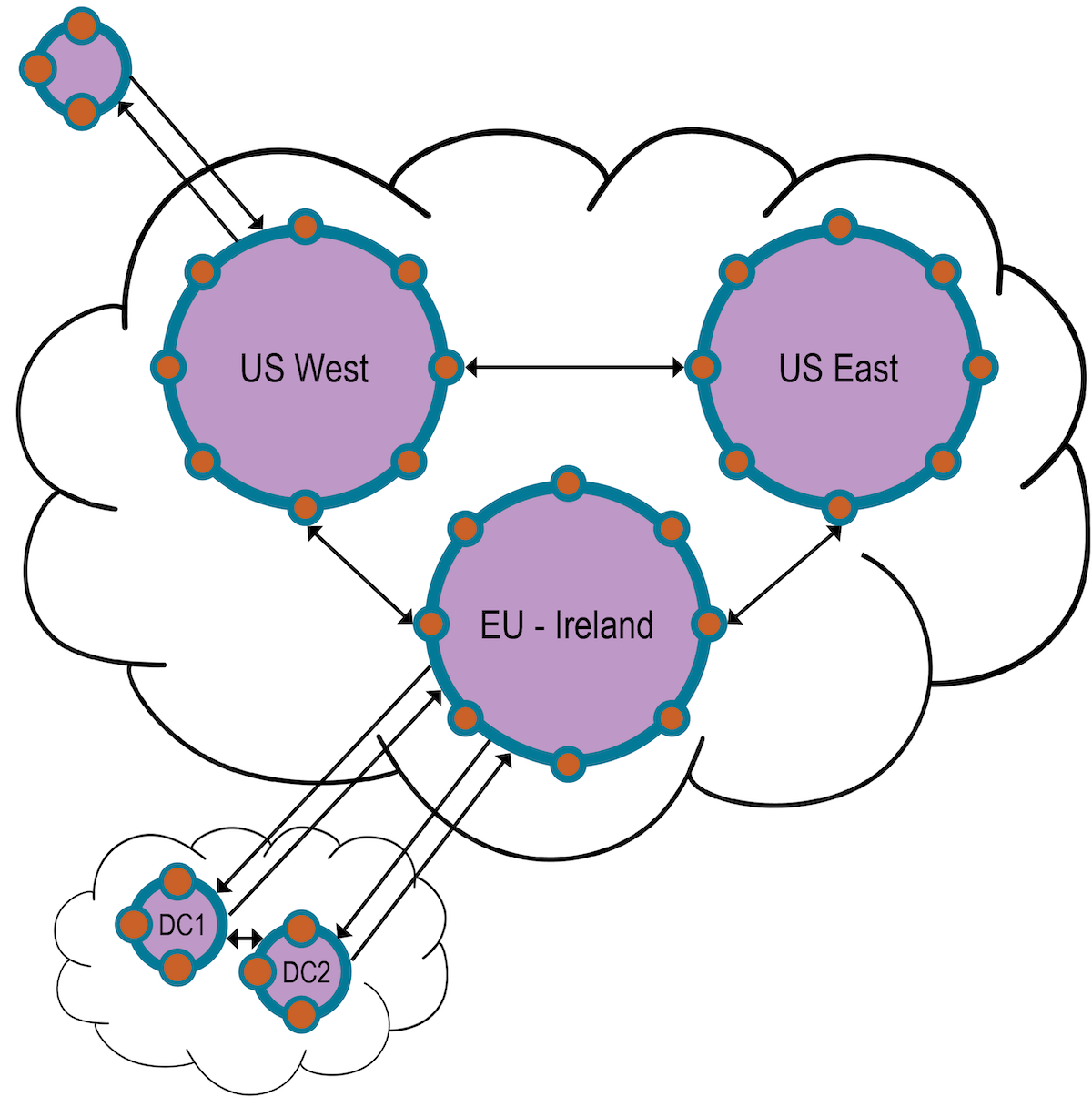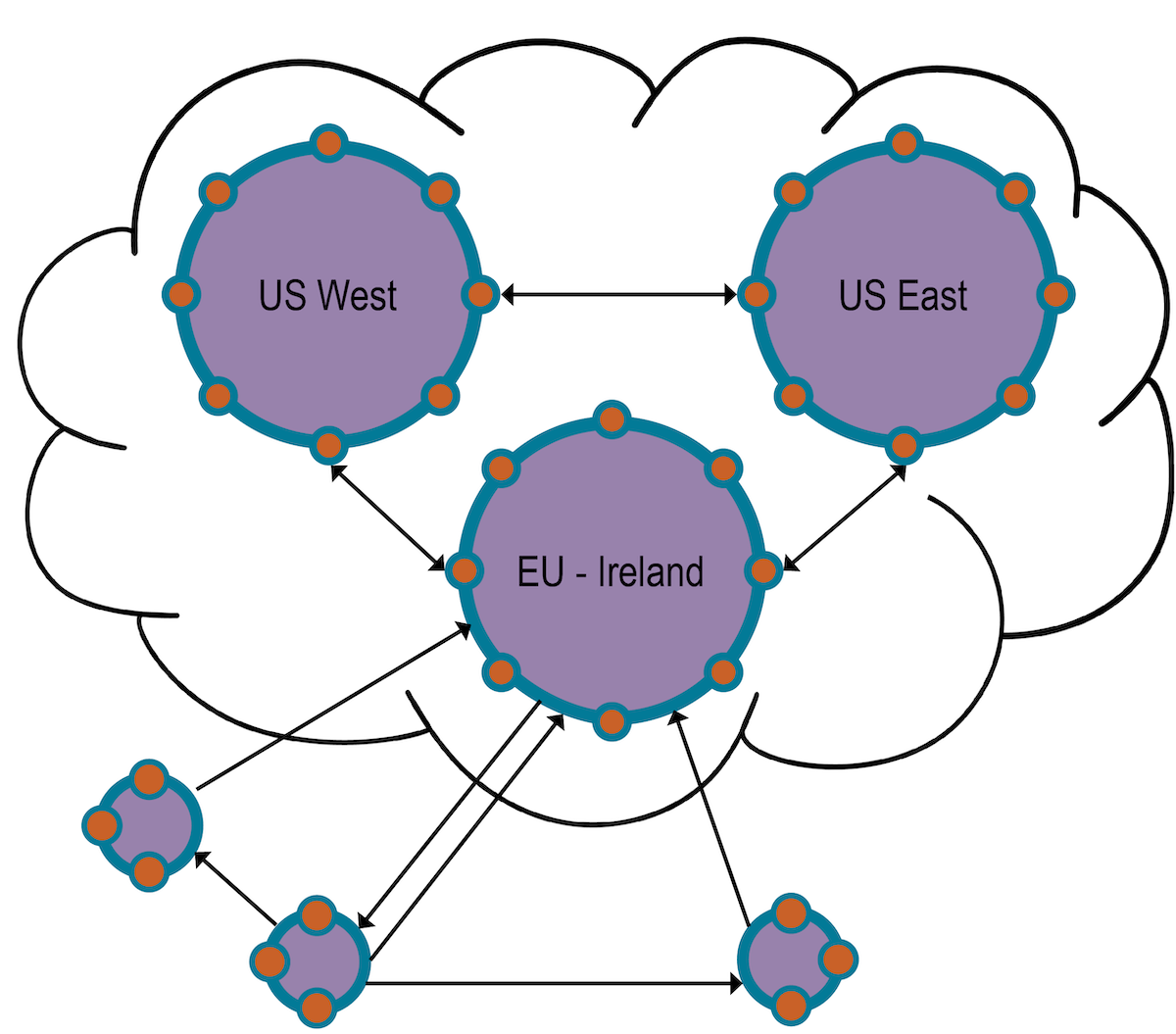DSE Advanced Replication architecture
DSE Advanced Replication enables configurable replication between clusters, identifying source and destination clusters with replication channels. Topologies such as hub-and-spoke or mesh networks can differentially push or pull data depending on operational needs.
A common operational scenario for DSE Advanced Replication is a network of remote sensors with poor network connection to a centrally located storage and analytics network. The remote edge clusters collect data, but can experience disconnections from the network and periodically send one-way updates to the central hub clusters when a connection is available. Some sensors may be deemed more important than others, requiring prioritization of transmission. All sensors can continue to collect data, and to transmit in a specified manner, or have collection turned off as needed. Each remote sensor cluster would be designated as a source, while the central database cluster would be a destination.

This configuration would also be suitable to a network of microservices clusters that report data to a central analytics cluster.
Another scenario may include similar remote sites that mainly send data to a centralized location, but must periodically be updated with information from the centralized location. In this scenario, each remote cluster would be both a source and a destination, with two channels designated, one upstream and one downstream. A small Point of Sale (POS) system serves as a possible model for this scenario, with periodic updates to the remote systems.

A mesh network can also use advanced replication, with remote clusters receiving updates from either a central location or another remote cluster.

Although any cluster, remote or centralized, may serve as a source for an advanced replication channel, a limited number of destinations can be configured for any one source. In general, consider the flow of replication as many sources to few destinations, rather than few sources to many destinations.
